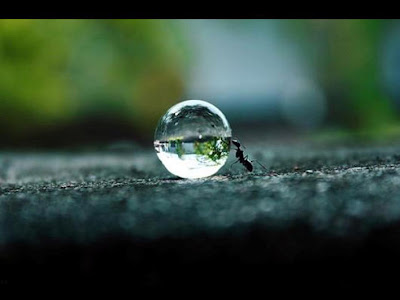 |
| It's six inches across. |
Friday night, we stopped by
one of our favorite Santa Monica restaurants for an early dinner.
Blue Plate Oysterette is a tiny place right on Ocean Avenue, known for its fresh seafood.
We like to sit at the little bar just inside the door, that overlooks the busy kitchen. Friday night, as we sipped glasses of King Estate pinot gris, we watched one of the kitchen staff working with a bin filled with huge scallop shells. He deftly shucked them open, cleaned off the shells, and laid them in a clean tub. Displayed on each shell, a full six inches across, the creature from the sea rested, still alive, glistening.

Most people are used to bay scallops, little tablets of sweet flesh no more than an inch in size, bought out of the shell by weight. Larger scallops, maybe two inches across, are called "sea scallops." Scallops are typically harvested by drag nets, shelled and the meat sorted by size before distribution and sale. But what we think of as "scallops" are really just part of the creature - the strong, white adductor muscle used to swim. Scallops are the only bivalves that actively swim, unlike mussels or oysters that attach themselves underwater, or clams that burrow down into the sand.
There's more to the beast than the muscle, however. The ruddy orange roe, or "coral" curves around the muscle, and the mantle is trimmed around with a fancy passementerie of fringe and tiny bead-like eyes.
In Europe, the whole scallop is sold in the shell. Here in the US, it's finally becoming more common to see "Diver Scallops" or whole scallops in the shell, harvested by hand. These here at Blue Plate were just flown in from Massachusetts, and still trembled with life.
[The Man I Love] had to try one. While we waited for our order, we supported west coast fisheries with a dozen Washington, British Columbia and Mexican oysters on the half-shell.
We love to watch the kitchen at work. Flames flashing on the big cooktops, servers drawing drinks or uncorking wine, shuckers laying out yet another dozen oysters on ice. We watched, transfixed, as one chef held a large live Maine lobster on a cutting board and smartly chopped it lengthwise, its legs still faintly waving as it met its destiny on the broiler. Ah, life is cruel, but lobster is delicious.
The scallop arrived in a sizzling hot cast-iron skillet, on a bed of rock salt. Baked with a sauce of sun-dried tomato and parmesan cheese, the flesh was sweet and nutty. The coral was milder tasting than the muscle, but sweet, and with a texture almost like a medium-cooked yolk of an egg. The whole thing was so delicious
[The Man I Love] cleaned the shell - I think he would have licked it if he could!
I chose instead a pan-sauted fillet of striped bass, served with a piquant tomato and sherry vinegar condiment. I shared a bit with
[The Man I Love], in payment for my taste of scallop and coral. The white flesh was perfectly cooked and delicate.
We've become such regulars at Blue Plate they recognize us now. With such fresh and delicious seafood, and a warm welcome, we always come back.










































